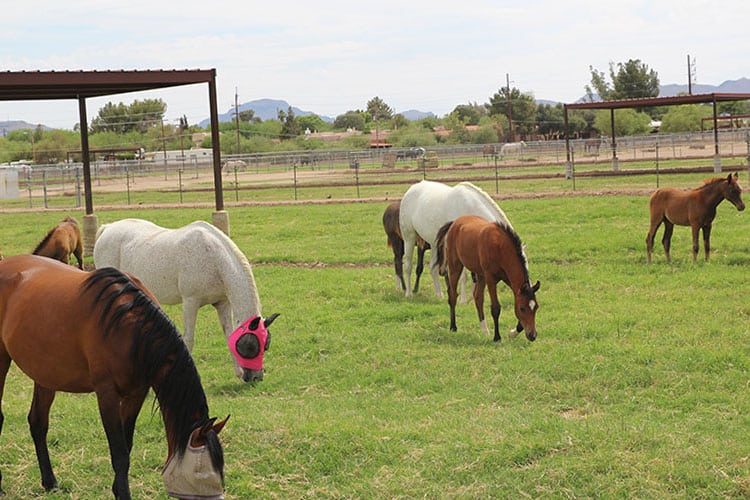The summer heat in Arizona can be very challenging for livestock, especially horses! During the summers, the temperatures start rising above 100 degrees. In these extreme conditions, you have to take extra care to ensure your horses are comfortable, happy, and healthy. It can be hard to know how to do that if you don’t know how to take care of them properly during hot days. Therefore, in this article, we have mentioned a few tips for you to keep your horses healthy. To learn about them, continue reading.
Appropriate Feed
During the hot Arizona summer, you should change your horses’ feed. Try not to feed them with food like alfalfa, oats, and corn that produce more heat, as that will make them feel hotter. Instead, feed them with grass hay or pasture. You have to make sure that you are feeding your horses with quality food, and roughage (hay or pasture) is perfect for them to stay healthy. Even if they are not in-expensive, but to make sure your horses stay healthy, do not buy cheap food for them. It is also recommended to add full-spectrum CBD oil in your horses’ diet as it may help them lead a healthier life. If you want to learn about CBD oil for your horses, check out Green Flower Botanicals.
Provide Fresh, Cool Water, and an Electrolyte Source
During the hot summer months, we all need more water than ever, and horses are no exception. About 60% of the horse’s body weight is water. So, on average, they require almost 10 to 15 gallons of water during extreme hot Arizona summer days. You also want to provide extra water in addition to a water trough and do not forget to clean the trough regularly to prevent dirt. Likewise, adding slicks and electrolytes to your horse’s regular diet is a great idea. They will help to replace minerals and electrolytes lost while sweating.
Don’t Force Your Horse to Work in Heat
Just because your horse has been working intensely at 1:00 p.m. daily, it doesn’t mean you can make him work when the temperature tops 90°F. If you have to work your horse in the extreme heat, reduce the workload, or divide it into a couple of short sessions. This is particularly important when the weather is too humid, which is contributing to the poor quality of the air your horse is breathing. In between breaks, you also want to offer frequent sips of cool water. Furthermore, as soon as you are done, take the tack off and sponge the horse off again with some cool water.
Know Your Horse and Signs of Heat Stroke
If your horse is exposed to the extreme heat that his body cannot handle, then the chances of happening a heatstroke to him increased. If your horse is exercising in hot conditions or is standing in a heated stall or trailer, know that he is always at risk of getting heatstroke. Therefore, you must be well aware of your horse’s average temperature, heart, and respiratory rates. If you don’t know how you can find the heart rate of your horse, then you simply need to find a pulse and count the beats for 15 seconds. After this, you need to multiply that number by four, and you will get the beats per minute. Moreover, the most common signs for heatstroke include an elevated heart rate, excessive or lack of sweating, and a temperature that persists above 103°F.
Avoid Sunburn
Did you know just like us, horses, especially the while ones can get sunburn as well? Even horses with white socks and blazes, hairless patches from scarring, or pink noses can be more susceptible to the sun rays. To avoid sunburn, you can use a fly scrim that can prevent sunburn, and it will also keep flies away at the same time. Additionally, you can apply sunscreen to the areas that are exposed. Lastly, the best thing you can do to prevent sunburn is to provide plenty of shade and to encourage your horse to stay under that during the hot sunny day.




